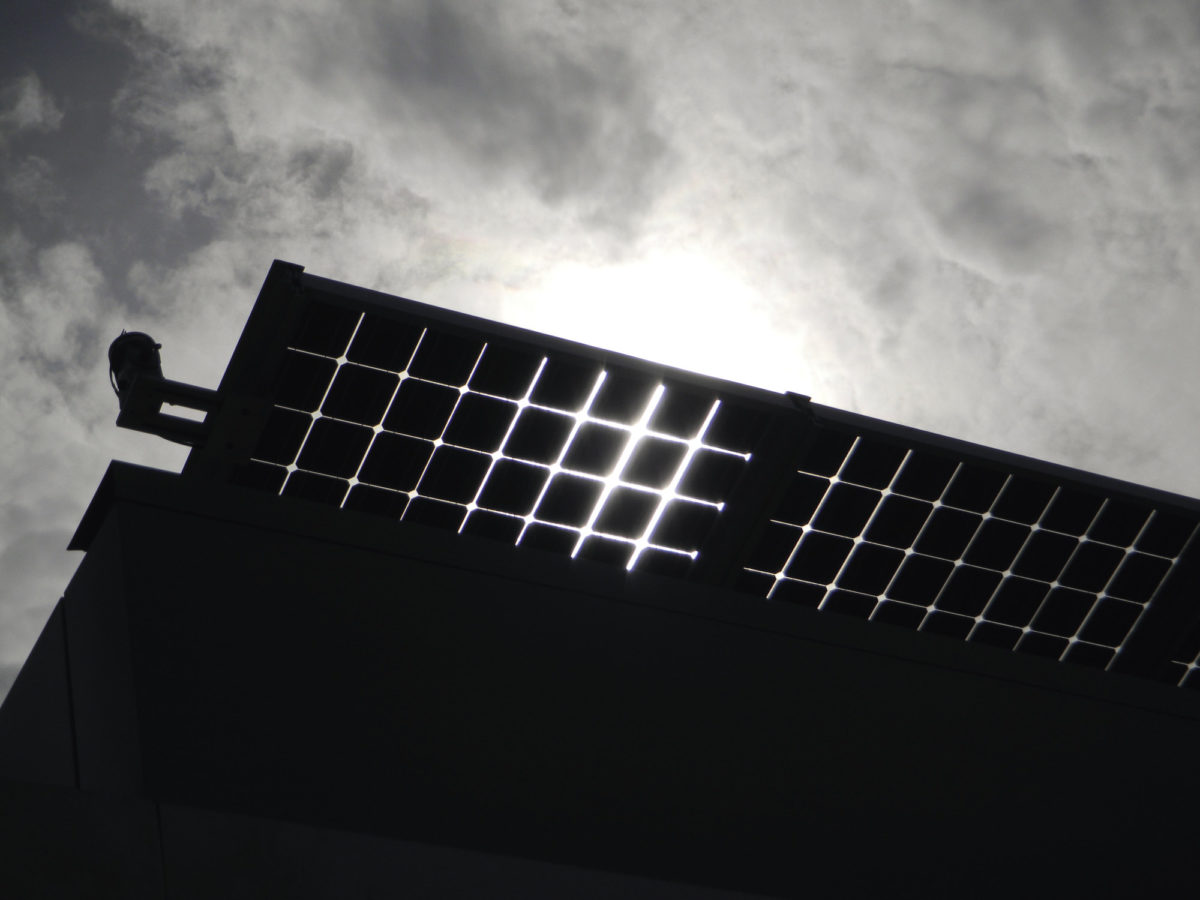Photovoltaic plants with bifacial modules are already being built along the world’s sunbelt, most major manufacturers are now selling them, and the technology is expected to soon occupy a prominent position in every solar market. But many experts wonder what yields they can expect from these modules and how the systems can be optimized. After all, the approach of, “the main thing is, replace the panels” does not go far enough.
Bifacial modules capture light from both sides of the module to generate power. This enables a higher yield per installed module. Depending on the price of the bifacial modules and the cost of plant optimization, electricity generation costs can ultimately fall or rise relative to monofacial plants.
Christian Reise, Senior Scientist at Fraunhofer ISE and a presenter in the pv magazine webinar on this topic in March, has been working for several years on forecasting yield gains from bifacial cells. He considers 5-15% to be a realistic target for large plants. And he wants to prevent a major misunderstanding. “The added output of bifacials is not a function of the modules alone. It depends mainly on system design.”
Buying bifacial modules only to screw them onto a pitched roof a few centimeters apart would squander the potential the modules offer. Yield simulations must be performed to show how much is gained from adopting a particular measure and whether it would justify the additional cost. The new modules make these simulations much more complex. A simulation program has to calculate the amount of irradiance on the modules.
Where previously only the position of the sun and the objects that cast shadows on the front face of the panels had to be considered, now the shadow cast by the mounting system and the modules themselves, the rear design of the modules, and the degree of reflection of the ground below also has to be factored in. How will the albedo change over the course of the year? Green grass can turn to yellowish dry grass and even snow in winter. Added to all this are the new module properties, such as bifaciality. Fraunhofer ISE offers a comprehensive simulation with 3D models for major investors. The institute says that its tool is highly accurate. The deviation of the simulation from the actual bifacial gain in two different sample installations was only about 1% for each.
The bifaciality factor
For such a simulation Christian Reise needs a number of input parameters. The first is the bifacial factor. It describes the ratio of the efficiency of the back face of the module to that of its front face. Unfortunately, with many manufacturers you cannot simply look up the bifacial factor on the specification sheet. A standardization process is currently underway to specify how bifaciality will be presented on the specification sheet in the future.
In the meantime, Reise recommends the practical solution of measuring the two sides of the module independently of each other. This involves covering one side and testing the other under standard conditions. P-type cells achieved a back to front ratio of 60-80%. N-type cells reached typical values of 80-95%, according to Reise.
A method popular with manufacturers is to simply extrapolate the output of the module as follows: If a bifacial
300 W module produces 5% more because it is illuminated from behind, then it is a 315 W panel. On the other hand, it would be important to know how much back side irradiance is actually needed to achieve the 5% increase in output – 5% more irradiance is not enough. For one, the efficiency of the back is worse than that of the front and, in addition, the relationship between the electrical power output of a module and the light input is not entirely linear, a fact demonstrated by the lower efficiency of modules in low light conditions. It would therefore be more accurate to irradiate bifacial modules with more power when flashing the front side to take the higher light input into account. Nevertheless, this still says nothing about the light absorption capacity of the back side. Reise therefore proposes, as a future standardized measurement, to direct the light from a light source via mirrors synchronously to both sides. With the help of filters, the power of the rear side can then be determined even with less irradiance. Using several filters that gradually reduce the irradiance level creates a clear power curve of the back side of the module.
It is also worth noting that the front side yield of a bifacial module is slightly lower than that of an otherwise identical monofacial module. This is due to the white backing of the monofacial panel. Internal reflection results in an additional yield of a few watts, which is not present in transparent bifacial modules.
Replicating mountings in a 3D model
Once the efficiency of both sides of the module has been clearly determined, the irradiance for each side is calculated in Reise’s yield calculation program and multiplied by the efficiency of the respective side. Now the characteristics of the system become the focus for determining the irradiance reaching the back of the module. Among these characteristics are the distance of the modules from the ground, the mounting angle, the albedo of the ground, and the degree of area utilization – a function of row spacing. However, the geometry of the mounting frame, the homogeneity of the irradiance and the geographical location are also important for obtaining the most accurate results.
To estimate the irradiation, methods use the so-called visible factor. The visible factor is the part of the irradiance that is reflected from one surface to another. “In the simplest case, we have at least two surfaces that reflect irradiance: the unshaded ground and the ground shaded by the module,” writes Reise in a publication on the topic. For more complex geometries, he and his colleagues use the Radiance program, which replaces such simple visible factor calculations with more complex methods, but also more precise beam tracking simulations.
The program developed in this way clearly shows that the back face yield increases as the mounting angle of the module becomes steeper. However, since the front face yield begins to decline at angles of more than 30 degrees, the common optimum is somewhat steeper than with monofacial modules. Other factors also shift to a new optimum for bifacial systems. For example, row spacing should be increased, as the usable irradiance increases as the ratio of shaded to illuminated area improves. This also applies to power plants with trackers. For systems with trackers, additional yields of between 8 and 11% are typical for bifacial systems, depending on the installation height. The tracker gain is then added to this. Bifacial tracker manufacturer Soltec, in cooperation with the National Renewable Energy Laboratory in the USA, has published figures showing that bifacial gain increases by 2% if the row spacing on grass-covered ground is increased from 8 meters to 10 meters.
Finding the new optimum
Some of the adjustments that make a bifacial system more efficient – high albedo, wide row spacing, distance from the ground, and a greater angle of inclination – stand in contradiction to the usual optimizations for solar power plants. Monofacial modules are increasingly being installed with a flatter angle of inclination. East-west installations cover the ground almost completely and nestle close to roof surfaces to guard against the wind.
Another exciting development are floating systems that take advantage of reflections from the surface of the water. Bifacial modules also have an attractive advantage in snowy areas. The steeper inclination angle allows the snow to slip off and a module that produces power on the back can heat up to melt snow on its front.
In summary, bifacial modules increase the yield per installed kilowatt peak and reduce material usage and thus the CO2 footprint of a plant. This also applies to systems in which the row spacing is not increased. Plants with bifacial modules are thus competitive with east-west plants that increase the yield per square meter of the total area.
However, the latter also requires more modules. These different approaches result in different potential applications for the respective technologies. Which one is ultimately used depends crucially on the local situation – factors such as land prices, available land, financing conditions, on-site energy requirements, the wind load zone, and much more.
The module costs, however, are particularly important. The faster the manufacturers of bifacial modules can adapt to the capacity increases of standard monofacial modules, the faster we will see them here in ground-mounted plants and on flat roofs.
This content is protected by copyright and may not be reused. If you want to cooperate with us and would like to reuse some of our content, please contact: editors@pv-magazine.com.



Great article! With bifacial power production, the panel temperature should increase and thus lower the overall efficiency. This was not dealt with in the article though!